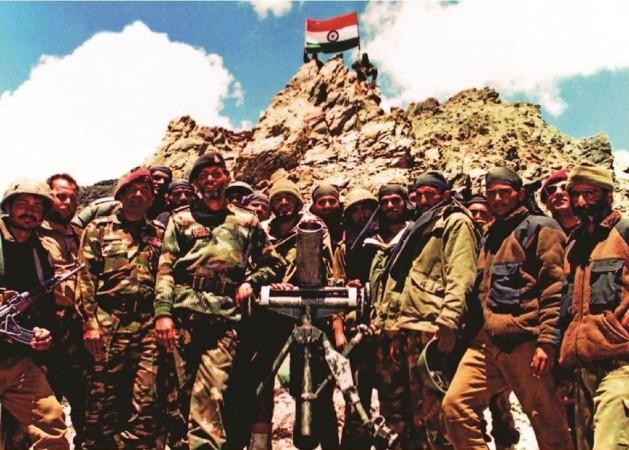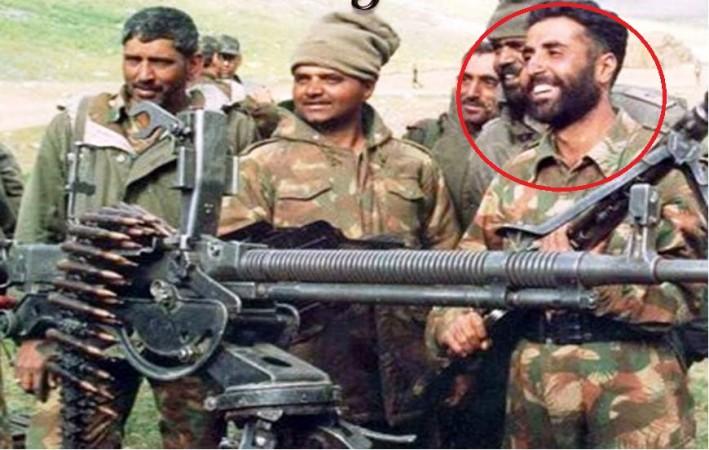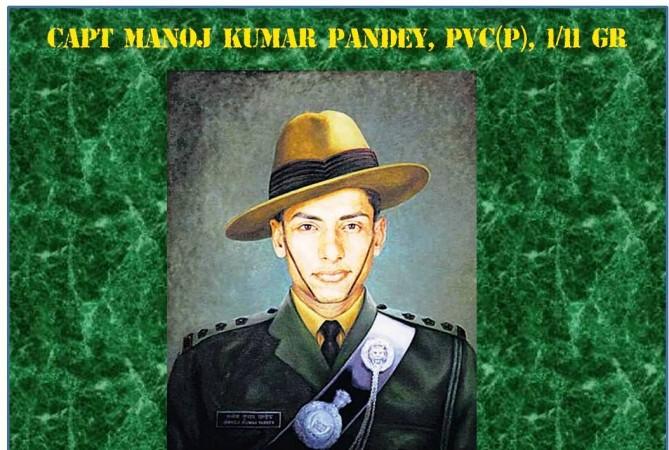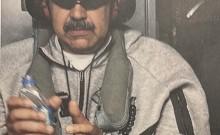
India celebrates the 19th anniversary of Kargil Vijay Diwas, named after the success of Operation Vijay in Kargil on Thursday. On July 26, 1999, India had regained the command of the high altitude outposts which were illegally occupied by the Pakistani Army and their militia.
The war lasted more than 60 days and 527 soldiers sacrificed their lives for the glory of the nation.
Over the years, Indian soldiers have given it all for their duty towards this great nation and have earned medals for gallantry. Today, let's take a look at the recipients of the Param Vir Chakra for the Kargil war to remember and honour their valiant deeds.
Captain Vikram Batra, 13 JAK RIF (awarded posthumously)

The 13 Jammu and Kashmir Rifles was assigned the task of capturing Point 5140, a strategically important mountain peak in the Dras sector under the command of Lieutenant Colonel Yogesh Kumar Joshi on June 17, 1999.
Batra decided to approach the hill from the rear as the front approach was directly under the enemy's surveillance. Capt. Batra along with his team hurled two grenades at the machine gun post.
In a close combat, he killed three enemy soldiers and sustained injuries. "Yeh dil maange more" were his famous words when he reported the capture of point 5140.
Capt. Batra was already making a name in the enemy ranks. He was called "Shershah" as the Indian Army intercepted one of the enemy radio conversations.
The next task for 13 JAK Rif was to capture point 4875. Showing the highest tradition of the Indian Army, "Service before self", Capt. Batra volunteered to lead the assault party despite having a high fever.
In a daredevil effort, he killed five enemy soldiers along a narrow ridge. Capt. Batra also led from the front and his men rallied behind him to achieve a nearly impossible task. While rescuing one of his JCOs, Capt. Batra came under heavy enemy fire and was martyred.
His valiant effort helped the Indian Army to capture the critical heights in the Dras sector. He was awarded Param Veer Chakra posthumously.
Captain Manoj Kumar Pandey, 1/11 Gorkha Rifles (awarded posthumously)

"If death strikes before I prove my blood, I promise (swear), I will kill death." This was Captain Manoj Kumar Pandey's fearlessness while he was fighting in the harshest terrain against a merciless enemy.
Captain Pandey took part in a series of boldly led attacks during the Kargil war, inflicting heavy losses to the enemy in the Batalik sector including the capture of Jubar Top. He led his platoon along a narrow, treacherous ridge that led to the enemy position.
While still short of the objective, the enemy fired upon the Indian soldiers effectively thwarting the Indian attack. Displaying great courage, he surged ahead of his troops and charged at the enemy with a full-throated battle cry through a hail of bullets.
Undeterred by his heavily wounded shoulder and leg, he continued solo charge with grim determination, until he closed in on the first bunker. Then in ferocious hand-to-hand combat, he killed two of the enemy and cleared the first bunker.
Inspired by their leader's spontaneous valour, the troops charged at the enemy and fell upon them. Unmindful of his grievous wounds, he rushed from bunker to bunker urging his men on. Critically injured, he collapsed at the final bunker and finally succumbed to his injuries. For his selfless effort, he was awarded Param Veer Chakra posthumously.
Subedar Sanjay Kumar, 13 JAK RIF

On July 4, 1999, just a day after Captain Batra was martyred while flushing out enemies from peak 4875, Rifleman Sanjay Kumar was given a task to recapture Area Flat Top of point 4875.
Having climbed the cliff, the team's movement was stalled by machine gun fire from an enemy bunker, about 150 meters far. Kumar realised that it was impossible to capture Area Flat Top while the enemy bunker was still firing. Despite being shot in the chest and arm, he charged towards the enemy bunkers as it was impossible to move before pinning down the enemy firing.
Though bleeding from the bullet wounds, Sanjay Kumar continued the charge towards the bunker. In hand-to-hand combat, he killed three enemy soldiers. He then picked up an enemy machine gun and crept towards the second enemy bunker.
The enemy soldiers, taken completely by surprise, were killed by Sanjay Kumar. Inspired by his act, the rest of the platoon also charged and captured Area Flat Top. For the outstanding devotion to duty, he was awarded Param Veer Chakra.

Yogendra Singh Yadav was enlisted in the commando platoon Ghatak which was given orders to capture three strategic bunkers on Tiger Hill on July 4, 1999. Yadav volunteered to lead the assault and climbed the cliff face while installing ropes that would allow further assaults on the feature.
Halfway up, an enemy bunker identified the movement and opened up the machine gun and rocket fire, killing the platoon commander and two others. In spite of sustaining multiple gunshot wounds, Yadav climbed the remaining 60 feet and reached the top.
Though severely injured, he crawled to the first bunker and lobbed a grenade, killing four Pakistani soldiers and neutralising enemy fire. This gave the rest of the platoon the opportunity to climb up the cliff face.
Unmindful of his injuries, Yadav then charged the second bunker along with two of his fellow soldiers and engaged in hand-to-hand combat, killing four Pakistani soldiers. Overall, Yadav was hit by 14 bullets but his determination defeated the enemies and he survived to receive Param Veer Chakra for his conspicuous courage.















